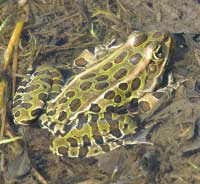PIJAC launches the website for its Bd-Free Phibs campaign, which aims to raise awareness of and reduce the spread of the deadly chytrid fungus.
The Pet Industry Joint Advisory Council (PIJAC) has launched the website for its “Bd-Free ‘Phibs campaign,” created to spread awareness of and reduce the spread of the fungal pathogen Batrachochytrium dendrobatidis, or Bd, which has had a negative impact on amphibian species worldwide.
“Amphibians are the most threatened group of animals worldwide,” said PIJAC’s Vice President for Environmental Policy and Communications, Jamie K. Reaser. “In recent decades, scientists have observed dramatic population declines and even extinctions of numerous amphibian species. Although habitat destruction is generally regarded as the primary cause of amphibian declines, numerous studies now attribute many of the die-offs to a newly recognized fungal pathogen known as Batrachochytrium dendrobatidis.”
The disease caused by Bd, known as chytridiomycosis, is the worst infectious disease ever recorded among wildlife in terms of the number of species impacted and the severity of the impact, according to PIJAC.
According to the organization, Bd was initially detected in amphibians held in zoos for educational and conservation purposes. It has caused mortality in some collections and could put rare species (including those in captive propagation programs) at risk. There is increasing evidence that the commercial trade in amphibians for pet/hobby, food, biological supply and bait purposes has resulted in the movement of Bd, according to PIJAC.
The Bd-Free ‘Phibs campaign provides information for amphibiankeepers on ways to help reduce the spread and impact of Bd on captive amphibian populations. It also discourages the release of captive amphibians into the wild.
The new website provides an overview of the issue and campaign, information on how to support the campaign, and links to resources for background information on Bd, as well as testing and treatment protocols. The website also has a database for sharing information on campaign-related projects. In the future, Bd-Free ‘Phibs campaign T-shirts and other materials will be available through the website’s online store.


